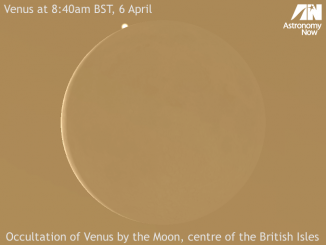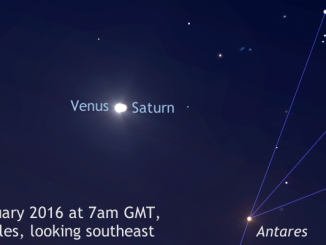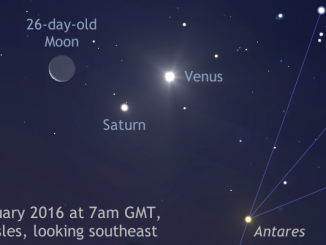
The Moon hides Venus in the morning sky
On the morning of Wednesday, 6 April experienced observers in the British Isles with a clear sky living south of a line drawn between Galway in Ireland, Dumfries in Scotland and Berwick-upon-Tweed in Northumberland can potentially observe planet Venus slip behind the northern polar regions of the 28-day-old waning crescent Moon. But beware: the Sun lies just 16 degrees away.









